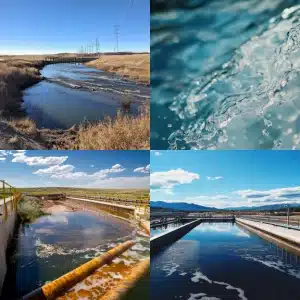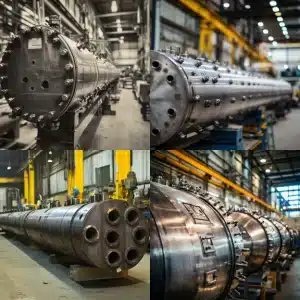The EPA plays a vital role in protecting public health and the environment while setting regulations that affect industries like oil and gas, power generation, and pressure vessel manufacturing. Although compliance can be costly, businesses that innovate and align with EPA standards can achieve sustainability, efficiency, and long-term growth.
Understanding the Role of the EPA in business regulations
At Red River, we understand that navigating EPA regulations can be overwhelming, especially for heavy manufacturing industries such as oil and gas or power generation. TThe Role of the EPA in business regulations is central to how companies operate, as EPA rules affect compliance, operational decisions, and long-term sustainability. But the question remains: is the EPA good or bad for your business? Let’s delve into the specifics.
What Does the Role of the EPA in business regulations do?
The EPA, Environmental Protection Agency was established to protect human health and the environment. Its regulations ensure companies meet environmental standards, reducing pollution and promoting sustainable operations. For industries we support, including public works, biogas, and industrial fabrication, operations and compliance are primarily influenced by these EPA mandates.
Since its inception in 1970, the EPA has enacted a plethora of regulations that have developed in step with changing social and environmental needs. Cleaner air and water, along with stricter waste controls, have significantly influenced the environment and how businesses are conducted. Whether these regulations are helpful or harmful generally depends on how one perceives their effect on each industry’s bottom line.
Key Industries Impacted by Role of the EPA in business regulations Policies
Industries like oil and gas, power generation, and commercial works face the heaviest EPA oversight. Navigating these policies is crucial for operational decisions. On one hand, EPA rules promote long-term environmental health; on the other, they are often seen as a financial burden.
Advantages of the Role of the EPA in business regulations
The EPA has been highly significant in protecting public health and the environment, particularly for industries like Red River. Though regulations may sometimes feel restrictive, they offer significant benefits that improve the overall quality of life in communities.
EPA Regulations: Protecting Public Health
The regulation of the EPA in ensuring clean air and clean water implies benefits directly to the public by establishing healthy parameters. The EPA sets limits on harmful emissions and pollutants that may cause health problems, such as respiratory diseases and water contamination.
EPA’s Improvement of the Environment
Thanks to the EPA’s sustainability focus, waterways are cleaner, air quality is better, and carbon emissions are reduced. Industries like power generation have adopted greener practices, while biogas companies innovate to meet regulatory requirements.
EPA Success Stories on Positive Impact
Many businesses have discovered ways to remain profitable while complying with EPA regulations. Red River’s pressure vessels allow clients to meet environmental standards without sacrificing operational efficiency.
Role of the EPA in business regulations and Related Challenges
Although beneficial for the environment, EPA compliance can be challenging. Industries like oil and gas and manufacturing may struggle with costs, operational changes, and monitoring requirements. Red River offers cost-effective solutions to navigate these challenges.
Financial Burden to Businesses
A common criticism of the EPA is its financial impact on businesses. Environmental regulations often require significant investments in new equipment, operational changes, and ongoing monitoring, which can strain the bottom line. Red River works with businesses to find cost-effective solutions to meet these standards without exhausting resources.
Is the EPA Over-Regulating the Economy?
Some believe that the EPA over-regulates businesses, imposing restrictions that stifle innovation and growth. Industries like oil and gas often face heavy scrutiny, making it difficult to keep up with evolving regulations. Red River’s manufacturing solutions prioritize efficiency while still meeting EPA requirements.
The Challenges of Balancing Environmental Concerns with Economic Growth
The debate between environmental protection and economic growth is ongoing. Some business leaders argue that excessive regulations hinder innovation and hiring. Red River helps balance these efforts by providing pressure vessels designed to comply with environmental standards while promoting economic progress.
Is the Role of the EPA in business regulations Necessary for the Future?
The role of the EPA often sparks debate, especially as industries face new challenges. Do they still have a place in the future of American industry?
The Future of EPA Policies and Innovation
There is a place for the EPA in the shift toward cleaner technologies and sustainability. Policies will likely focus on encouraging greener practices and cleaner energy sources. At Red River, we stay ahead of these changes by providing pressure vessels designed to meet future regulatory requirements without compromising efficiency.
Alternatives to Role of the EPA in business regulations: What’s Next for Businesses?
Some suggest that voluntary environmental standards or industry-led initiatives might replace EPA regulations. Businesses could shift toward self-regulation and innovative fabrication solutions, that allow flexibility in sustainable practices. Red River offers compliant solutions that balance regulatory demands with operational efficiency.
Need a reliable partner?
Red River specializes in pressure vessel design and manufacturing, including prefabricated spools and modular skids. Request a quote or contact us to see how we can help your business meet EPA standards while maintaining operational efficiency.
Frequently Asked Questions
1. How Do EPA Regulations Specifically Affect Pressure Vessel Manufacturing?
EPA regulations impact pressure vessel manufacturing regarding emissions, waste disposal, and material handling. For example, VOCs and HAPs released during fabrication must adhere to sensitive environmental standards, prompting manufacturers to use cleaner technologies.
2. Which Industries Are Mainly Targeted by EPA Regulations Pertaining to Pressure Vessel Standards?
The oil and gas, power generation, biogas, and chemical processing industries are most targeted by EPA regulations. These sectors rely heavily on pressure vessels for storage and processing, making adherence to EPA standards crucial.
3. What Are the Consequences for Pressure Vessel Manufacturers if They Don’t Comply with EPA Requirements?
Non-compliance with EPA regulations can lead to fines, shutdowns, and reputational damage. Pressure vessel manufacturers may face project delays or difficulties in obtaining certifications, affecting their ability to serve industries that require strict environmental standards.
4. Are There Any Exemptions for Pressure Vessel Manufacturers from EPA Regulations?
Some small-scale operations may qualify for exemptions, but these are rare. Manufacturers handling hazardous materials are typically subject to strict EPA oversight, with few opportunities for leniency.
5. What Does the Future Hold for Pressure Vessel Manufacturers Regarding EPA Regulations?
Future EPA regulations are expected to focus more on reducing greenhouse gases and promoting sustainability. This shift will likely drive innovation in materials and manufacturing processes to meet stricter environmental standards.
Key Takeaways
- EPA regulations ensure cleaner air, water, and reduced environmental hazards, benefiting public health.
- Industries such as oil and gas, power generation, and biogas are most impacted by EPA compliance requirements.
- Compliance can be financially challenging, but innovative solutions help businesses meet standards without compromising efficiency.
- Future EPA policies will likely drive greener practices and technological innovation in manufacturing processes.
Related Blog Post
- Conductivity Levels in Drinking Water: Why They Matter for Safety and Industry
- Common Signs Your Drinking Water May Be Unsafe | Red River
- Understanding Unregulated Drinking Water Sources | Red River
- Knowing Safe Drinking Water Standards | Red River
- Why Drinking Water Quality Standards Matter | Red River
- Understanding EPA Contaminants and Their Impact | Red River




